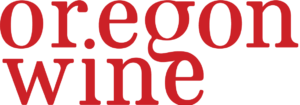Powdery mildew and other pathogenic fungi continue to be significant management concern for grape growers. At the USDA-ARS Horticulture Crops Research facility in Corvallis, Dr. Walt Mahaffee’s Foliar Pathology Lab investigates problems caused by these pathogenic fungi. With grants from the OWB and American Viticulture Foundation, Dr. Mahaffee and collaborators from the University of Hawaii have developed an innovative system for real-time powdery mildew detection and analysis.
In order to develop tools for the management of powdery mildew that growers can easily afford and adopt, Dr. Mahaffee faced two major challenges: 1) develop an accurate, reliable and durable field-based sampling tool, and 2) create a simple analysis tool the industry can afford and can access. This two-step method enables managers to assess the level of disease pressure in the vineyard and make real-time spray decisions. By accurately assessing the inoculum load in vineyards, growers can adjust the number of spray applications and more accurately time applications, reducing cost and pesticide use.
To evaluate this system, Dr. Mahaffee’s team developed and deployed the now-familiar spinning rod spore trap sampling device in commercial vineyards with the help of grower-collaborators. Over the course of the three-year project, Dr, Mahaffee’s lab demonstrated that growers could accurately detect grape powdery mildew and make management decisions guided by inoculum density results derived by quantitative polymerase chain reaction (qPCR). Using the qPCR data, some growers were able to reduce fungicide applications by up to two sprays without increasing disease on leaves or fruit.
As a result of this research, the method and technology were ready to be moved into commercial application. Dr. Mahaffee explored various options, and traps and an inoculum detection service using the qPCR procedure are now being offered by Revolution Crop Consultants, LLC.
In future research, the spore counts may be combined with weather data to develop a simulation model for disease development and plant growth. Growers will be able to simulate a growing season using site specific weather data and vineyard characteristics.
In an exceptionally important corollary to this detection work, Dr. Mahaffee is working with Dr. Tim Miles, assistant professor at California State University, Monterey Bay to develop methods to monitor for fungicide resistance in grape powdery mildew. These results may be able to be incorporated into the services offered by Revolution Crop Consultants or others.

Leave a comment